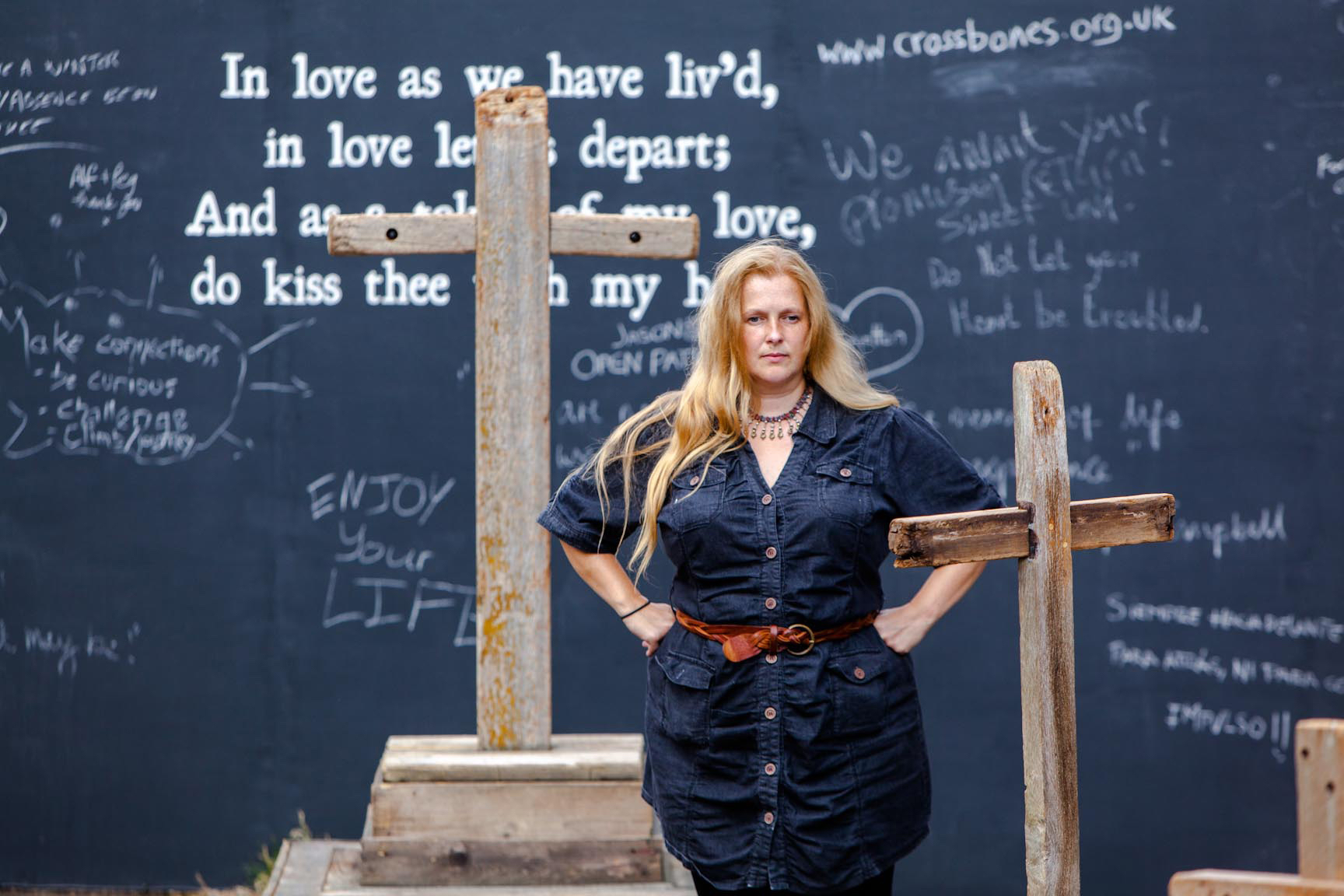
Browse Works
Instrumentation
Additional Information
An Interactive Installation On a Post-Medieval Burial Site, by Emily Peasgood.
Requiem for Crossbones, on the site of an un-consecrated post-medieval burial ground, was an evocative site-specific sound installation created and composed by British artist Emily Peasgood specially for MERGE Bankside. The piece sensed movement and responded to its audience, triggering a soundscape which acted as an interpretation of the lives once lived and laid to rest at the site.
Requiem for Crossbones was an act of remembrance; a communal reflection on history, inequality and acceptance. It encouraged participation and gave visitors the space to reflect on personal loss.
The work comprised of five melodies, each creating individual narratives that told the story of Crossbones and come together to form a whole soundscape. Peasgood also drew plots on the ground to acknowledge those lost, and a memorial board which encouraged visitors to leave messages for the lost or living.
Bankside was once a notoriously lawless part of London, a rowdy pleasure quarter outside of the city walls and its jurisdictions. Home to theatres, brothels and gambling dens, it was a place where the outcast resided. Established as early as the 17th century, Crossbones, is believed to be the final resting place for prostitutes, known as ‘Winchester Geese’, paupers, criminals and children - those who could not afford burial or were deemed unfit for burial in consecrated ground. In excavation work carried out in 1992, a majority of bodies exhumed were children. As such, Peasgood placed emphasis on the children and babies laid to rest at Crossbones.
As part of Uniqlo Tate Lates programme Peasgood discussed her installation and working with history and communities.
Tags
Details
London Bridge
United Kingdom
